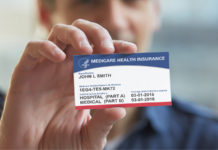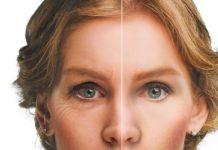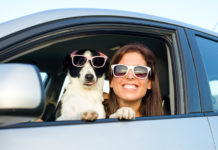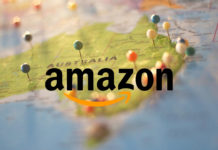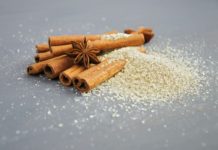Related Topics (Ads):
Due to lack of knowledge or discouragement to ask the vet, you may be making some mistakes when feeding your dog. Don’t worry as it is nothing major or unsolvable. Everything can be modified and improved in favor of your furry companion’s health. To avoid health problems, bad habits or excess weight in your dog, you will have to modify your habits when feeding him, as well as know what type of foods are best and worst suited for your canine friend.
Always remember that your dog’s health is going to be linked in a big way to what he ingests, and so what he eats is going to also affect his overall behavior and mood, which should give you some clues as to whether what your dog’s eating is helping him or harming him.
In this article, we are going to mention some mistakes some owners dog related to actually feeding their dogs, as well as some foods your dog should never eat, and finally dog food that isn’t a death sentence, but that can be dangerous to your pet in the future and that you should look out for.
Mistakes Made When Feeding Your Dog
Leaving the food out in the open
We don’t pay much attention to food storage when it comes to our pets, thinking that it’s all the same and that it doesn’t matter for them. But as with any food, bacteria will break it down if it’s exposed to air and moisture. This way the animal is more likely to get sick. Use for example the food bags to keep the food fresh at all times and close them tightly. If you give your pet wet food such as rice, then keep it in the refrigerator. Any container must be clean and tightly closed.
Related Topics (Ads):
Leaving uneaten food on the plate
Sometimes dogs don’t finish everything on their plate, either because they don’t like something or because they’re satisfied. If that happens, don’t leave it out in the open, especially at night, because it can attract the attention of rodents or insects. Besides, it’ll start to decompose, and if another day the dog feels like eating it, it’ll be eating food that’s in bad condition or contaminated.
The rule is simple. If three hours have passed and your pet has not eaten from its bowl, it will probably not eat any more. You have two options: throw it away or keep it in the fridge for the next meal.
Not looking at expiration dates
All food expires at some point, including dog food. If you give your dog wet food or canned food, pay close attention to that expiration date, because if the animal eats something bad, it can suffer from stomach pain, vomiting, diarrhea, etc.
Not washing the plate after meals
Again, we think it is not necessary because it is still the dog’s plate, but it’s not good that it stays dirty from the previous food. Even if it looks shiny, it’ll have leftover food that will later decompose and turn into mold. The dirt in that container can accumulate bacteria that will make your dog sick, so when you finish eating, wash their plate like you’d do yours, with detergent and hot water.
Stuff You Shouldn’t Feed Your Dog EVER
- Chocolate, especially cocoa or chocolate powder. The darker it is, the more dangerous it is.
- Raisins and grapes, even in small quantities.
- Pecans
- Avocado. It is only slightly poisonous for some dogs. The most serious problem is if they eat it whole, because of its seed.
- Alcoholic beverages, for they contain ethanol which is very toxic to dogs.
- Bones and fruit pips
- Coffee and any beverage with caffeine
- Sugar-free gum and any food with Xylitol
- Onions and to a lesser extent garlic.
Dangerous dog foods to look out for
Artificial coloring/Coloring agents
These coloring agents are the ones that make certain types of foods -be it for humans or for animals- have extravagant colors when they shouldn’t have them, like bright yellow or bright red. Well, as it turns out a lot these artificial colorings tend to affect your dog’s well-being in not-so-positive ways. In its article, Wellmindedpets.com [1] talks about some of these agents. For example, they mention the dye Yellow 5, or tartrazine, and the fact it requires a label in Europe, as it’s thought to cause many harmful effects such as insomnia and hyperactivity, as well as it being linked to asthma, lymphomas, ADHD, and many more conditions. The article goes in depth regarding a lot of these coloring agents and their effects, concluding that they’re of no benefit to pets.
Related Topics (Ads):
Artificial Preservatives
Artificial preservatives can be one of the most dangerous ingredients for our dogs. Some of the more common ones are:
- Propylene Glycol
- Ethoxyquin
- BHA
- BHT
- TBHQ
- Propyl gallate
It’s recommended to avoid these chemical preservatives. A good idea is to buy different brands periodically, testing which of them isn’t toxic for our dogs. Avoiding these preservatives, and choosing the right food for them, can add years of quality of life to our pets.
Carbohydrates
Dogs’ bodies aren’t really made to handle and digest most carbs and thus should not be a part of their whatsoever, especially taking into account that a lot of dogs can become allergic to some of these, like grain for example.
Carrageenan
An extract coming from Irish Moss, Carrageenan is an edible seaweed and is used as a ‘thickening agent’ by a lot of dog-food brands. Be on the look-out for this as it’s known to cause many a digestive problem in dogs, such as ulcers and intestinal inflammations.
Getting the Best Dog Food for Your Money
The best advice we can give is to just search online, as it’ll broaden your options to get the best dog food possible within your budget, as well as make things be more efficient for you. Remember to avoid the foods listed here and to keep a history of your dog’s allergies and such with your vet of choice. Try different brands and keep up to date with the ins and outs of the market by researching related websites on the regular.
Related Topics (Ads):
[1] http://www.wellmindedpets.com/blog/2013/11/25/the-dangers-of-artificial-dyes-in-pet-food

